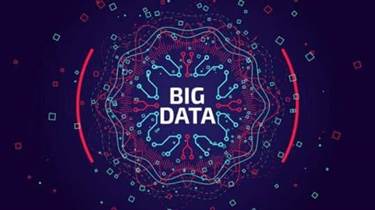Quality testing services to organizations of all sizes to allow them to appreciate and weigh all risks of the software design & implementation. Boolean logic is required (i.e. understanding of logical operators and, or, and also not). Error conditions by guessing which are most likely to occur.

Limited entry decision table is a form of decision table where there are only two possible values for conditions which is nothing but Boolean value. This decision table shall be used to derive the final test cases. So, it is the cause-effect graph for the given situation. A tester needs to convert causes and effects into logical statements and then design cause-effect https://globalcloudteam.com/glossary/cause-effect-graph/ graph. If function gives output according to the input so, it is considered as defect free, and if not doing so, then it is sent to the development team for the correction. Cause-Effect graph technique converts the requirements specification into a logical relationship between the input and output conditions by using logical operators like AND, OR and NOT.
What is a cause-effect graph?
Arun Kaushik winds up his talk on Quality and Quality Culture in the fifth part of this series. First of all we need to identify the causes and its effects. Our mission is to help all testers from beginners to advanced on latest testing trends. SoapUI Tutorial series is designed for beginners who want to start learning the WebService to advanced.
- BenderRBT test case design tool has cause-effect graphing test case design component.
- Similarly, OR function states that if C1 or C2 or C3 is 1, e1 is 1 else e1 is 0.
- Each column of the decision-table is converted into a test case.
- The AND function states that if both C, and C2 are 1, e1 is 1; else e1 is 0.
- Highlights areas where further data collection is required for analysis.
- Constraints are also added between causes and effects if possible.
The results of this study show that the use of comprehensive collections allows a slight increase of classification accuracy, and that the “cost of comprehensibility” is small. Specify the constraints on the graph describing the combinations of cause and/or effects that are impossible. This is either a condition or set of conditions because of which either some change/transformation happens in the system or some output is generated. Sometimes, the specification contains an impossible combination of causes such that two causes cannot be set to 1 simultaneously.
Black Box Techniques
It Encourages team participation and utilizes the team knowledge of the process. Effect E1- Update made- The logic for the existence of effect E1 is ” AND C3″. In other words, for the existence of effect E1 any one from C1 and C2 but the C3 must be true.
Haploidentical transplants deliver equal outcomes to matched … – Journal of Translational Medicine
Haploidentical transplants deliver equal outcomes to matched ….
Posted: Thu, 18 May 2023 03:35:23 GMT [source]
Highlights areas where further data collection is required for analysis. Many candidates are rejected or down-leveled in technical interviews due to poor performance in behavioral or cultural fit interviews. Ace your interviews with this free course, where you will practice confidently tackling behavioral https://globalcloudteam.com/ interview questions. It Increases knowledge of the process by helping everyone to learn more about the factors at work and how they relate. It Identifies areas, where data should be collected for further study. It Helps us to determine the root causes of a problem or quality using a structured approach.
Stories to Help You Level-Up at Work
A diagram of the effects works backward to determine and graph all causes. Each circle on the diagram represents a sequence of instructions with no decision or control points. Each line on the diagram represents an equivalent class of data and the condition of its usage. When the graph is done, at least one valid and one invalid value for each equivalent set of data on the graph is translated into test case data.

5) If the multiple-fault assumption is warranted, worst-case testing, robust worst-case testing and decision table testing are identical. For a module, identify the input conditions and actions . A Cause represents a distinct input condition that brings about an internal change in the system. An Effect represents an output condition, a system transformation or a state resulting from a combination of causes.
Black-Box Testing
This technique provides a visual representation of the logical relationships between causes and effects, expressed as a Boolean expression. Cause-Effect Graph graphically shows the connection between a given outcome and all issues that manipulate the outcome. It is also known as Ishikawa diagram because of the way it looks, invented by Kaoru Ishikawa or fish bone diagram.

Then, test cases are designed using data from each representative, equivalent set. The theory is that by exhaustively testing one item from each set, we can assume that all other equivalent items are also exhaustively tested. Convert the graph into limited entry decision table by tracing state conditions in the graph.
Software Testing Class
The first value accepts only character and the character should be either A or B. If the two values has above combination then the output printed is “MESSAGE 1”. If the character in the first value is incorrect, then the output printed is “INCORRECT VALUE 1”. If the character in the second value is not a digit, then the message printed is “INCORRECT VALUE 2”. 6) If the program contains significant exception handling, robustness testing and decision table testing are indicated.

A cause is an individual input condition or class of input conditions . An effect, in turn, is the output condition or the modification of the system . Causes and effects are determined by successive reading the specification and emphasizing words or phrases which describe cause and effects. This article will discuss white box testing techniques, examples, and more. The dynamic test cases are used when code works dynamically based on user input. For example, while using email account, on entering valid email, the system accepts it but, when you enter invalid email, it throws an error message.
Symbols used in Cause-effect graphs:
For instance, dividing by zero, unless handled properly, causes abnormal ending of modules. If a module contains division, use a test that includes a zero divisor. Since it is based on intuition, error guessing is usually not effective in finding all errors, only the most common ones. If error guessing is used, it should always be used with some other strategy. This comparison is carried out here on the basis of an empirical study, using several publicly available data sets.

